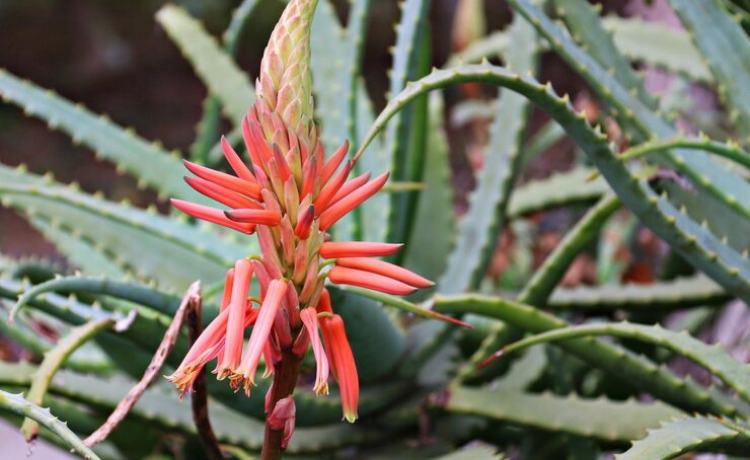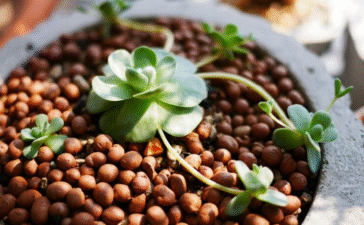The genus Agave includes hundreds of species, each with a unique personality. These striking succulents, native to the Americas, are celebrated for their bold architectural forms and incredible resilience. From the massive Century Plant to the compact Queen Victoria Agave, they are cornerstones of arid gardens and play a vital ecological role. Among this diverse family, one species captivates gardeners and botanists with its rare flowering spectacle and delicate appearance: Agave geminiflora, the Twin-Flowered Agave.
Agave geminiflora stands apart from its relatives. While many agaves are known for their broad, rigid leaves, this species features a dense rosette of hundreds of slender, flexible, dark green leaves, often adorned with white filiferous threads along the margins. This fountain-like appearance makes it a stunning focal point in any landscape. But its most remarkable feature is its once-in-a-lifetime bloom. This article will guide you through everything you need to know about the flowered agave, exploring the unique lifecycle, care requirements, and ecological importance of the beautiful Agave geminiflora.
Understanding Agave geminiflora
Agave geminiflora is a succulent species native to the oak and pine forests of Nayarit and Jalisco in western Mexico. Its name, derived from Latin, means “twin-flowered,” a direct reference to its unique blooming habit. Unlike its robust cousins, it presents a softer, more graceful silhouette, making it highly sought after for ornamental gardening. Its leaves are narrow and unarmed, lacking the sharp terminal spines common to other agaves, which makes it a safer choice for gardens with foot traffic.
Its common names, including Twin-Flowered Agave and Spike Agave, highlight its defining characteristics. Taxonomically, it belongs to the Asparagaceae family, a vast group that also includes asparagus and yucca. Its scientific classification is Agave geminiflora, placing it within a genus of over 200 species. Its unique morphology and flowering behavior distinguish it as a prized specimen for plant enthusiasts.
The Once-in-a-Lifetime Bloom
The most dramatic event in the life of Agave geminiflora is its flowering. This species is monocarpic, which means it flowers only once before dying. This grand finale typically occurs after 10 to 15 years of patient growth. When the plant reaches maturity, it channels all its energy into producing a spectacular flower spike, or inflorescence, that can soar up to 15 feet high. The plant’s rosette, which has been its signature feature for years, begins to transform as it prepares for this final act.
The term “twin-flowered” becomes clear as the blooms emerge. Flowers appear in pairs along the length of the unbranched spike, a characteristic that is quite rare in the agave world. These greenish-yellow flowers, often tinged with red or purple, are arranged densely along the stalk, creating a stunning vertical display. This flowering period is a slow and magnificent process, lasting for several weeks as the blooms open sequentially from the bottom to the top.
In its native habitat, Agave geminiflora plays a crucial role in the local ecosystem. Its nectar-rich flowers are a vital food source for pollinators, primarily nocturnal bats and hummingbirds. These creatures are drawn to the tall, fragrant spike, transferring pollen from one plant to another and ensuring the production of viable seeds. After flowering, the parent plant dies, but its legacy lives on through the thousands of seeds it scatters, ready to start the cycle anew.
Care and Cultivation Guide
Growing Agave geminiflora is a rewarding experience, as it is a relatively low-maintenance plant if its basic needs are met. For optimal growth, plant it in well-drained, gritty soil. A mix of cactus potting soil, perlite, and coarse sand works well, as it prevents water from lingering around the roots, which can lead to rot.
This agave is highly drought-tolerant once established but benefits from occasional watering during its growing season in spring and summer. Allow the soil to dry out completely between waterings. Reduce watering significantly in the winter to prevent root damage. Overwatering is the most common mistake when caring for this plant.
Agave geminiflora thrives in full sun to partial shade. In hotter desert climates, providing some afternoon shade can prevent the leaves from scorching. In cooler regions, full sun exposure will encourage dense, healthy growth. This species is hardy in USDA zones 9 through 11, tolerating temperatures down to about 20-25°F (-6 to -4°C) for short periods. Frost protection is necessary in colder climates. Minimal pruning is required; you only need to remove any dead or damaged lower leaves to maintain a tidy appearance.
Ecological and Environmental Benefits
Beyond its ornamental value, Agave geminiflora provides significant ecological benefits. In its native Mexican forests, it helps stabilize soil on steep slopes, preventing erosion. Its dense rosette offers shelter for small animals, and its decomposition after flowering returns vital nutrients to the soil.
The plant is a keystone species for supporting local biodiversity. The single, massive flowering event provides a critical nectar source for pollinators when other resources might be scarce. Bats, in particular, rely on the nectar for energy during their migrations. By cultivating this plant, gardeners can help support local pollinator populations, including bees and hummingbirds, even outside its native range. Due to its restricted natural habitat, conservation efforts are important to protect wild populations from habitat loss and over-collection.
Common Problems and Challenges
While generally resilient, Agave geminiflora can face some issues. The most common pests are agave snout weevils and mealybugs. The agave snout weevil can cause fatal damage by burrowing into the plant’s core. Inspecting plants before purchase and maintaining healthy growing conditions are the best preventive measures. Mealybugs can be controlled by spraying the plant with insecticidal soap or a solution of rubbing alcohol and water.
Environmental stress is another major concern. Overwatering is the primary cause of root rot, a fungal disease that can quickly kill the plant. Ensure the soil provides excellent drainage and adjust your watering schedule based on the season. Extreme cold can also cause tissue damage. If you live in a region with freezing temperatures, consider growing your agave in a container that can be moved indoors during winter.
Propagation and Reproduction
Unlike many other agave species that produce numerous offsets or “pups” around their base, Agave geminiflora is known for being mostly solitary. It rarely produces offshoots, making propagation by division an infrequent option.
The primary method of reproduction for this species is through seeds. After the plant flowers and dies, collect the dried seed pods from the flower stalk. Sow the seeds in a well-draining seed-starting mix, keeping them lightly moist and warm. Germination can take several weeks. Once the seedlings are large enough to handle, transplant them into individual pots. Growing Agave geminiflora from seed is a slow process, but it is the most reliable way to propagate this stunning plant.
Landscaping and Aesthetic Uses
The unique form of Agave geminiflora makes it a versatile choice for modern and traditional garden designs. Its fine-textured, fountain-like appearance provides a soft contrast to the bold, rigid forms of other succulents. It works beautifully as a solitary specimen plant, a focal point in a rock garden, or planted in mass for a dramatic effect.
Pair it with other drought-tolerant plants like sedums, aloes, and ornamental grasses. The deep green of its leaves contrasts well with silver-leafed plants like Artemisia or blue-hued succulents like Echeveria.
Thanks to its manageable size and slow growth, Agave geminiflora is an excellent candidate for container gardening. Growing it in a pot allows you to control its soil and water conditions precisely and provides an easy way to protect it from frost in colder climates. A large, stylish container can elevate its appearance, making it a perfect addition to a patio, balcony, or entryway.
Also Read: “flowering in july“
A Legacy in Bloom
Agave geminiflora is more than just a beautiful plant; it is a lesson in patience and a celebration of life’s grand cycles. Its graceful form and spectacular, once-in-a-lifetime bloom make it a treasured addition to any garden. By understanding its needs and appreciating its ecological role, you can successfully cultivate this unique species and witness its magnificent floral display. If you’re looking to add a touch of elegance and drama to your garden, consider seeking out the Twin-Flowered Agave at your local specialty nursery or botanical garden.
Frequently Asked Questions (FAQ)
Why does Agave geminiflora bloom only once?
Agave geminiflora is monocarpic, meaning it has a single reproductive cycle. It spends its entire life, typically 10 to 15 years, accumulating the energy and resources needed to produce one massive flower stalk. This reproductive strategy ensures the highest possible chance of successful pollination and seed production. After dedicating all its reserves to this final act, the parent plant dies, having completed its life cycle.
How do I know if my Agave geminiflora is ready to flower?
Several signs indicate that your agave is preparing to bloom. The central rosette, or “heart,” of the plant will begin to elongate, forming a cone-like shape. The plant’s overall growth may appear to accelerate as it prepares to send up the flower spike. This is a clear signal that it is entering its final flowering stage.
Can I grow Agave geminiflora indoors?
Yes, Agave geminiflora can be grown indoors, provided it receives enough light. Place it near a south-facing window where it can get at least six hours of direct sunlight daily. If natural light is insufficient, you may need to supplement with a grow light. Use a well-draining cactus mix and a pot with drainage holes. Be careful not to overwater, especially during the winter months.
Is it possible to grow Agave geminiflora in cold climates?
While Agave geminiflora is hardy down to about 20°F (-6°C), it cannot survive prolonged freezing temperatures. In climates colder than USDA zone 9, it is best to grow this agave in a container. This allows you to move the plant indoors or to a protected location, such as a garage or greenhouse, during the winter to shield it from frost and extreme cold.












